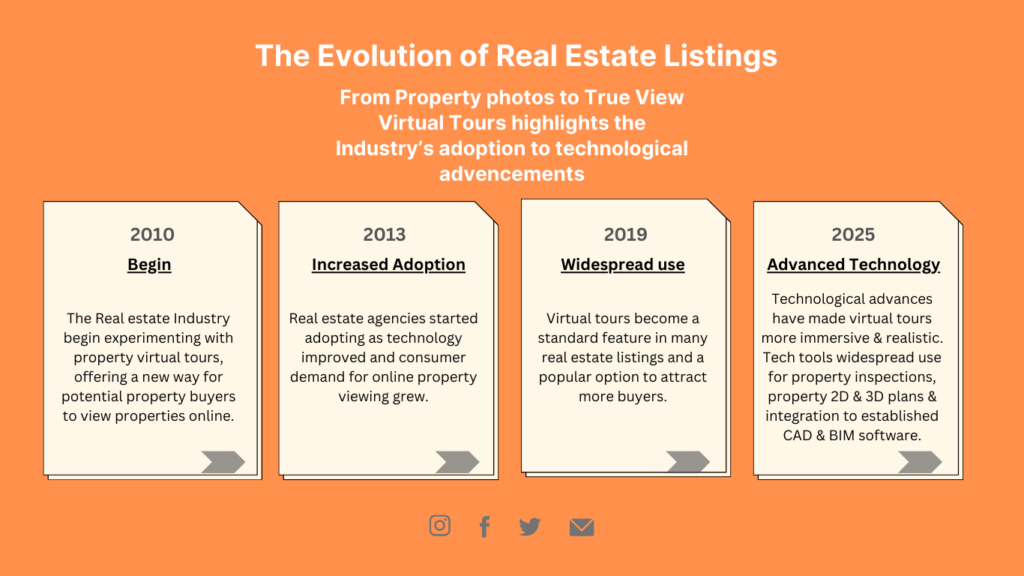3D True View walkthroughs offer a near-life experience of any property. The technology captures every nook and cranny, offering viewers a true sense of layout and design. Real estate agents use these tools to highlight a property’s best features. The walkthroughs simulate an on-site visit, enticing buyers who want to explore homes without leaving their current location. Software for 3D modeling becomes pivotal in creating rich visuals that bring properties to life.
Advanced tech tools like laser scanners and high-quality cameras are at the forefront of this process. They ensure accurate captures of spaces. Books like “The BIM Handbook” can dive further into this technology. Prospective buyers appreciate this deeper engagement, making informed decisions based on detailed renderings. New to this scene? Dive into “3D Imaging in Real Estate” by John W. Chrisfield for more insight.
Gone are days when buyers needed to travel miles to check potential properties. Walkthroughs grant them the luxury to explore each detail right from their devices. This is not just about convenience but about providing a nuanced viewing experience. For instance, utilizing 3D cameras that capture spatial measurements helps in understanding space utilization. The quicker a buyer can assess a potential buy, the smoother and faster the decision process. This understanding reduces the need for frequent in-person visits.
Buyers can note elements like lighting and room sizes. Tools like “SketchUp for Dummies” or online platforms can ease the transition for real marketers entering this space. In 2025, 67% of home buyers demand virtual tours when looking at properties. These numbers are hard to ignore, making integrating this technology essential for sellers and agents alike. For sellers, providing these tours adds an irreplaceable competitive advantage.
Virtual tours have revolutionized buyer engagement. Listings with them get 87% more views than those without. Increased interest results from immersive experiences and the ability to access foreign markets. Agents look beyond traditional boundaries, engaging more diverse buyers. For agents curious about boosting reach further, refer to literature like “Digital Marketing for Real Estate” by Ryan Deiss.
These walkthroughs aren’t passive experiences. Buyers control what they see, enhancing their connection with the property. This freedom turns potential interest into actual offers. A property’s virtual presence can significantly influence sales outcomes. Knowledge is power—and walkthroughs ensure potential buyers have the power. In 2025, selling homes for 9% more and 31% quicker with virtual tours over traditional listings speaks volumes.
As 2025 progresses, virtual tours will continue to reshape real estate marketing. Many anticipate these technologies becoming more integrated into everyday buying and selling. The data indicates a trend where 99% of sellers view 3D tours as a competitive advantage. These tools evolve with new tech trends, keeping properties relevant in competitive markets.
Agents and sellers need to embrace this evolution. Combining new tech with emerging augmented reality offers endless possibilities. Books like “Augmented Reality and Virtual Reality” by M. Claudia offer futuristic insights. 3D walkthroughs will serve not only traditional clients but also adaptive and tech-savvy new generations. The excitement around such innovations promises lasting impacts on the market.
Incorporating 3D True View walkthroughs has shown to not only increase buyer engagement but also potentially elevate property listings by reaching foreign markets, boosting sales by up to 9%, and speeding up transactions by 31% as per 2025 data. Given the projected trend, it is estimated that by 2025, 67% of home buyers will expect virtual tours, and the technology will be increasingly necessary for competitive positioning in the real estate market.


